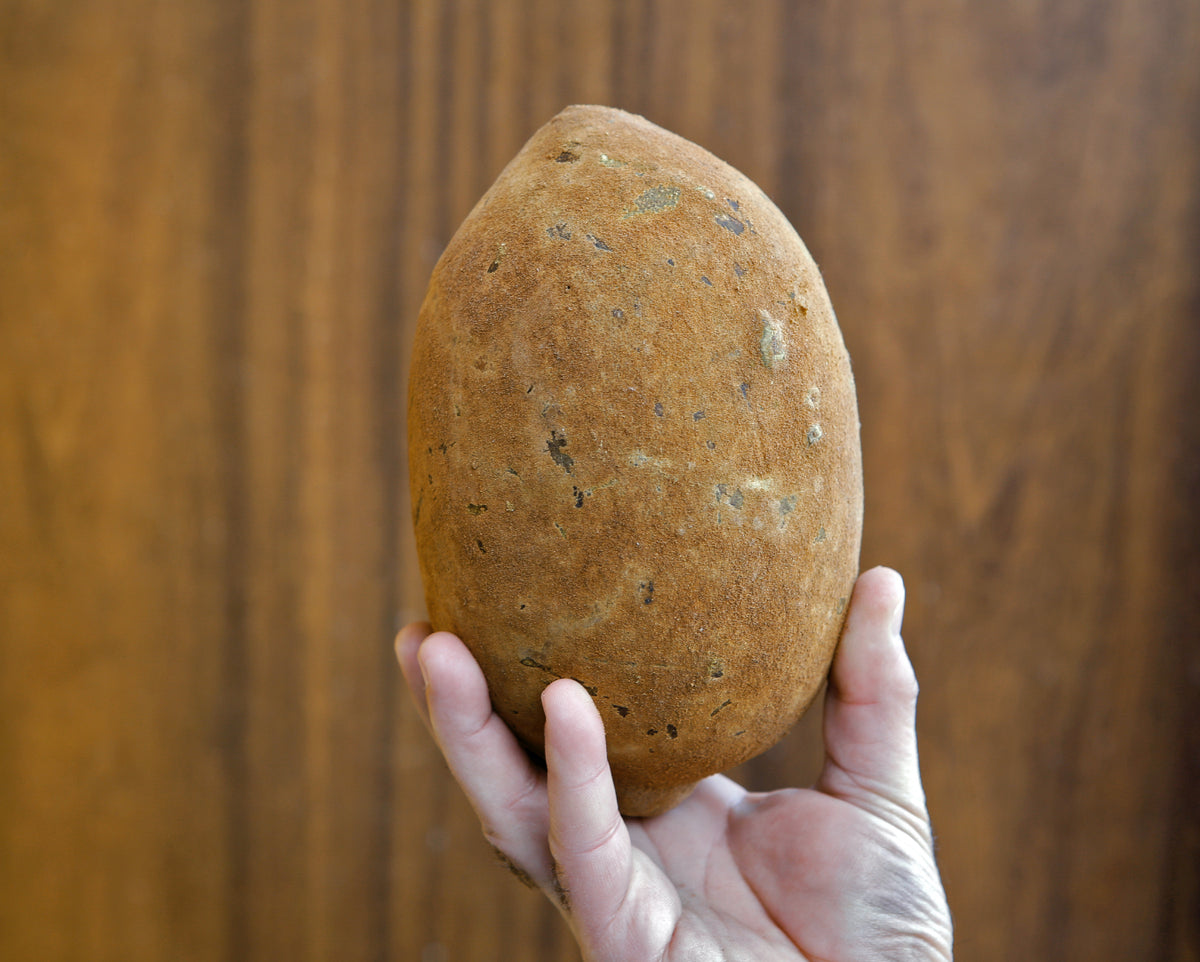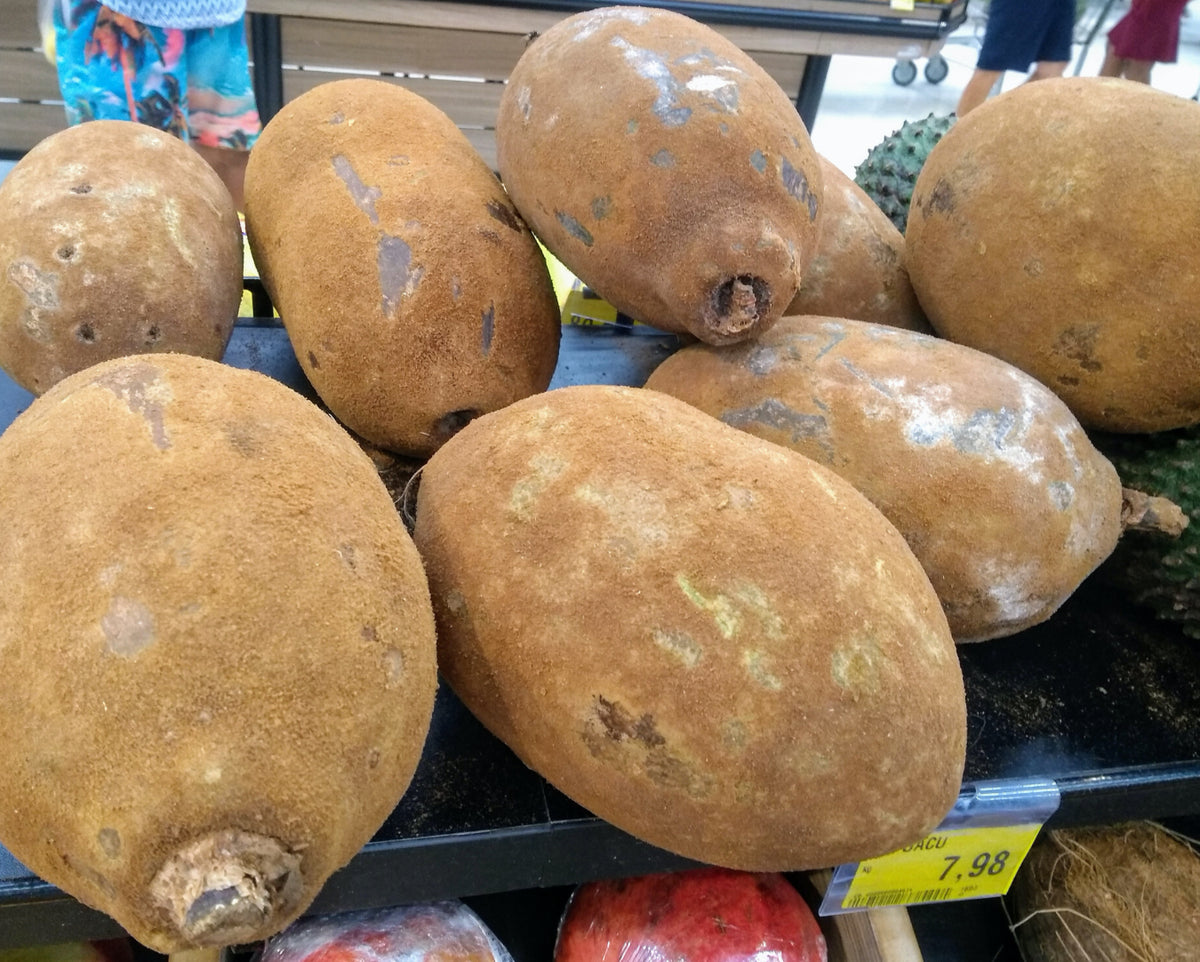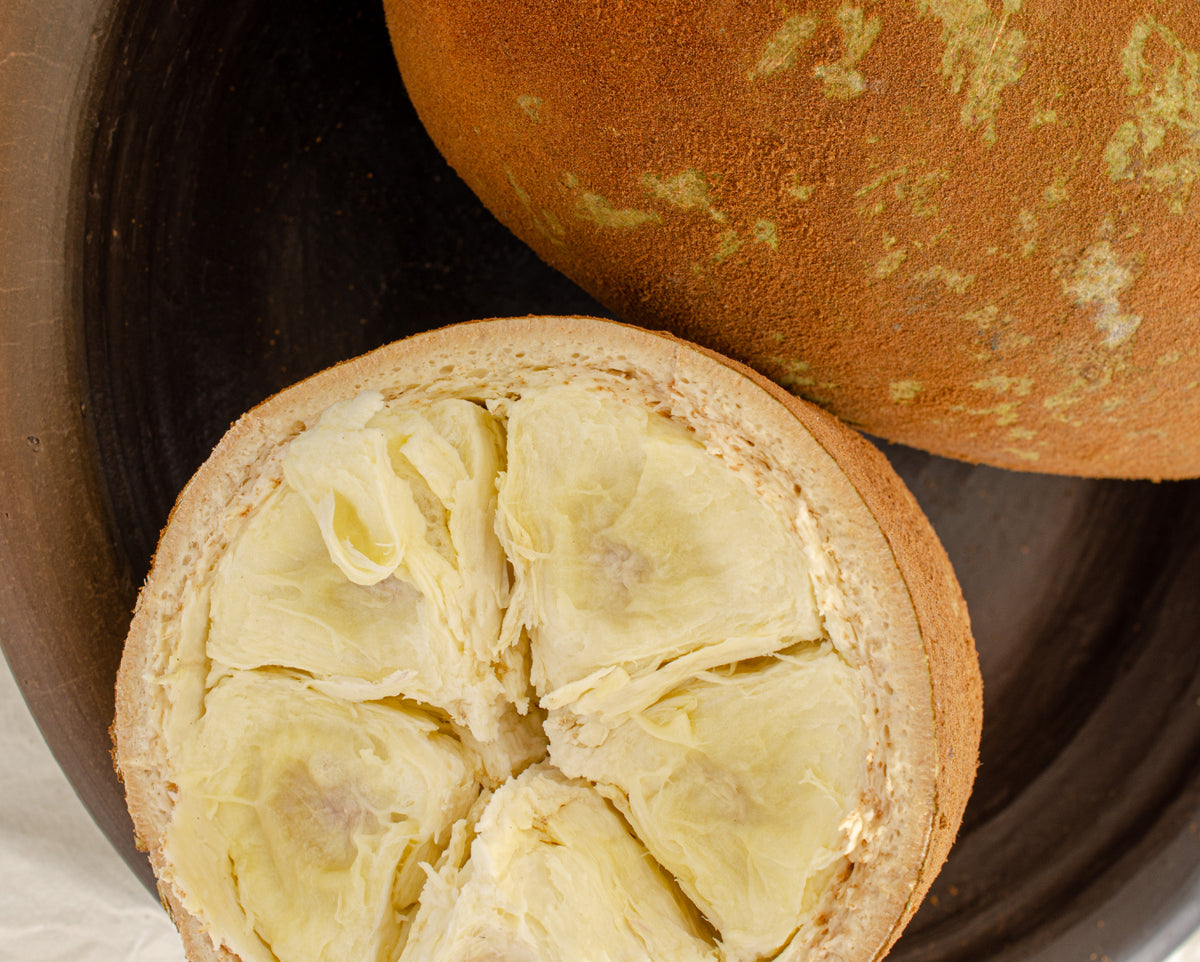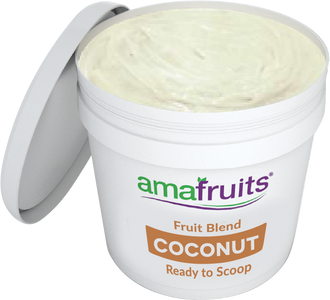
Amazon's Beauty Secret
Cupuacu (pronounced koo-poo-ah-soo) is a delicious melon-sized fruit with creamy white pulp that grows in the drainage basin of the Amazon in northern parts of Brazil. Cupuacu is known in the Amazon as “the pharmacy in a fruit” and could be considered one of the most nutritionally beneficial superfruits ever introduced to the outside world. As a cousin of the cacao fruit, cupuacu has a prized tropical flavor combining elements of chocolate, bananas, pear, passion fruit and pineapple.

Benefits of the Cupuacu Fruit
-
Has a unique polyphenol called theograndin, as well as many other antioxidants.
-
Includes essential and nonessential amino acids.
-
Contains essential vitamins such as Vitamin A, Vitamins B1(thiamin), B2 (riboflavin) and B3 (niacin), Vitamin C, and Vitamin E.
-
Contains minerals including calcium, iron, magnesium, potassium, selenium, copper, manganese, phosphorus, and zinc.
-
Immunity supporting plant sterols.





Harvesting Cupuacu

Cupuacu is harvested as a sustainable rainforest product from the Amazon. It is common throughout the Amazon drainage basin where the trees grow wild under the canopy of the rainforest and preserve the natural ecosystem of the region. What’s more, since it grows naturally throughout Brazil and can be harvested in between more intensive harvests like acai, the popular spread of cupuacu is uniquely positioned to benefit the people of the Amazon most directly.
That being said, cupuacu does require some patience. Cupuacu trees don’t produce fruit that humans can eat until they are at least five or six years old. Once the tree begins producing fruit, the ripening and harvesting will generally occur during the rainy season between January and April.
Once ripe, the fuzzy and oblong fruits look like a mashup between a coconut, a papaya, a melon, and a potato. They are covered with a thick outer skin and are harvested for both their pulp and their seeds.








